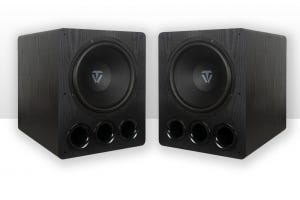
Want to mount your TV, and wondering if you can do it yourself? Well, you're in luck -- mounting a television is certainly a safe task to do yourself, as long as you follow the right procedure and know about the proper safety precautions to take.
TV's are an expensive investment, so it's extremely important to make sure they are mounted properly. Otherwise, you could damage this valuable equipment as well as your wall, which could cost you hundreds of dollars and put someone in danger. As long as you put in the proper planning and do it the right way, mounting a TV is actually a breeze and completely safe. The first thing to consider is the type of mount that's right for your TV. Here's what you need to know about choosing a TV mount:
Wall Type
Firstly, find out the material of the wall you will be mounting the TV onto. Not all walls or parts of a wall are safe to hold heavy equipment like televisions. Additionally, different wall materials require different types of hardware. Most often, you'll be mounting on either drywall with wooden studs or concrete. If the wall is drywall with studs, make sure you get a mount that is compatible with stud spacing or single stud mounting. The mount should come with lag bolts or wood screws. You'll also have to use a stud finder to locate the studs within the wall and measure how far apart they are. You may be slightly limited as to where you can mount your TV to ensure it is supported by the studs. You can choose to mount directly in the drywall, but you have to use anchors that can support the proper weight, and these are not as reliable as using studs.
If you're mounting on a concrete wall, it may be difficult to find a mount that includes the proper hardware. If this is the case, stop by a local hardware store and ask for the proper materials, such as tap con anchors or red head wedge anchors. Some walls have metal studs instead of wood. In that case, you'll need toggle bolts to install the mount.
TV Size
It is essential to get a TV mount that can support the size and weight of your TV. Most mounts have a range of sizes they can support, just be sure your TV screen size and weight falls within the range. The last thing you want after newly mounting your flat screen TV is to watch it break the mount and fall to the floor.
Mount Type
You can opt for a variety of mount types with different flexibility and TV angles:
Fixed mounts
A fixed mount, as the name implies, doesn't offer mobility to change the TV angle at all. Fixed mounts are often preferred because they can hold flat screen TVs flush to the wall; they are great for more permanent home theatre installations or when the TV is mounted at a standard eye level. With a non-adjustable mount, it's important to have full lighting control in the room to avoid glare. Fixed mounts come in different styles for mounting flat on the wall or on a corner.
Tilting mounts
With a tilting mount, the TV can be vertically adjusted while staying in the same position on the wall. Tilting mounts are great for TVs placed above eye level. They also offer adjustment for glare caused by sunlight during the day.
Swingarm mounts
Swingarms are full motion mounts with an extending adjustable arm to allow for horizontal and vertical TV adjustment, as well as tilting. These are recommended for locations where the TV needs to be moved often, such as environments with high sunlight. Although they provide the most accessibility, swingarm mounts are larger and less sleek in appearance than fixed and tilting mounts.
Cost
Of course, price is something to consider if you have a specific budget. If you are mounting a heavier TV, be wary of cheap mounts. A poorly constructed mount with cheap materials is a dangerous investment, especially if your TV approaches the maximum weight limit. It is worthwhile to invest in a quality mount that will protect your television adequately. It’s always a good idea to hire a professional to mount your television if you’re not confident in your mounting abilities.





